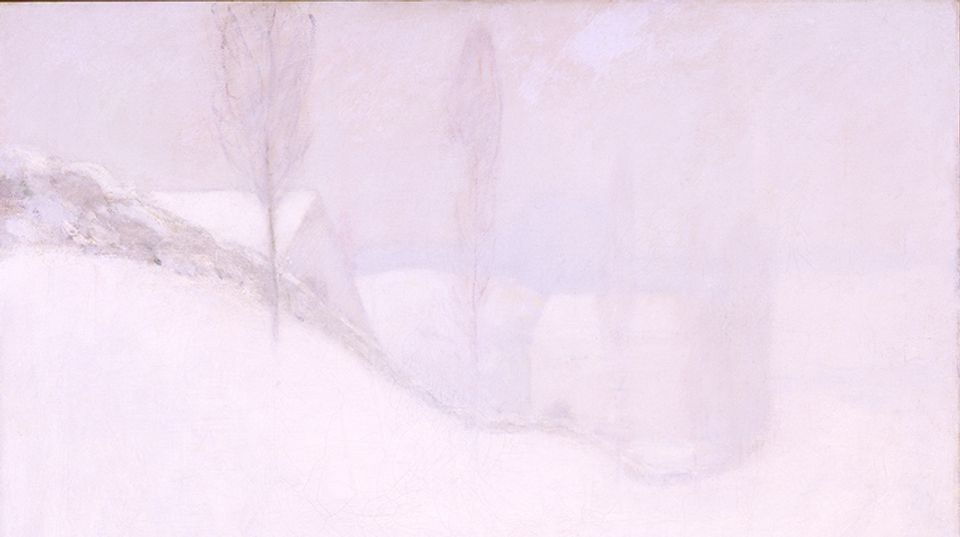This blog post is part of a series of pieces about our film and media arts initiatives here at American Art. Michael Mansfield, associate curator of film and media art, has some final words on our exhibition Nam June Paik: Global Visionary, which runs through this Sunday, August 11.
Nam June Paik: Global Visionary closes this Sunday. The exhibition has been on view for a little over eight months, a long time for both the museum and the artworks. I will be sad to see it go. I'll sincerely miss having this work on view, and it is nice to see the artist himself as I pass through the gallery every day. But mostly, I’m excited. While this installation is indeed closing, Nam June Paik has really set the stage for the museum's Film and Media Art Initiative, in more ways than one.
In organizing Global Visionary, I was struck by just how contemporary these vintage electronic artworks felt and how fresh the issues are. Nam June Paik had already been the subject of countless retrospectives and solo artist surveys during his lifetime. He staged avant-garde performances and participated in group shows as early as the 1960s. He broadcast video essays and produced live satellite events from the '70s through the '90s. He performed in world-renowned theaters and museums as well as basement galleries or on the street, exhibiting continuously through to the end of his life. Each event pushed boundaries just a little further. Nam June Paik's work has long enjoyed tremendous exposure on a global scale and touched broad and diverse audiences during a nearly 50 year career. And still, the artist and his artwork continue to invoke new and compelling experiences. How is that?
Nam June Paik is an inspiration. Through his early explorations, he single-handedly transformed technology into an artist's medium, literally inventing new tools with which to explore, shape and participate in our growing media culture. Not only did Paik inspire his own community of artists, his work radically changed contemporary art. His visual and conceptual influence can be felt throughout late 20th-century art and into the current generation of computer artists. His writings have become increasingly important to scholars, curators, and critics around the world. The entirety of his artistic practice anticipated today's global creative culture.
In 2009 the museum acquired the Nam June Paik's archive, a blend of traditional paper holdings (letters, writings, and ephemera) and objects (studio effects, recordings, vintage electronics and other source materials). The Archive includes the artist's early writings on art, history, and technology, as well as performance scores, production notes for videotape and television projects, plans for video installations, vintage photographs... the list goes on. This treasure trove promises exciting new understandings about the beginnings of media art. It holds secrets waiting to be discovered. Sifting through this enormous volume of material has already yielded hidden gems, such as an early black and white version of Paik's seminal work, TV Clock, or previously unseen performance scores written in Fortran, an early computer language. And, we've only just begun.
For this installation of Paik's artwork, the archive acts as a kind of index. The exhibition was not arranged chronologically, but rather thematically. We introduced the show with TV Clock, (1963/1989), a contemplative look at time represented through a fixed electronic image. It is placed in direct conversation with Megatron Matrix (1995), the spectacle of media culture in a newly realized global community. Then we come to TV Garden (1974/2000), organically visualizing the natural spread and growth of telecommunications across the country and around the world. Throughout the exhibition, Paik conceptually touches on figuration and performance (Merce Digital, High Tech Baby), the humanization of technology (TV Cello, TV Bra), participation and composition (Random Access and Prepared Piano), spirituality and contemporary culture (Whitney Buddha Complex), and the orientation and structure of communication (TV Chair and My Best Video Dieter Roth), each of which introduce the unique character identified in these new modes of expression. The archive plays a pivotal role in articulating these issues, connecting the dots through the artist's own words and his handling of materials.
Whimsically described as the "George Washington of video art," Nam June Paik was just that: the globe's best, first media artist. He invented a medium and fostered a new kind of practice. He worked across media, cultures and national boundaries. He was a prolific artist and a visionary thinker. Nam June Paik left something extraordinary for all of us to draw upon and his work continues to give. I'm excited for what's next.



















